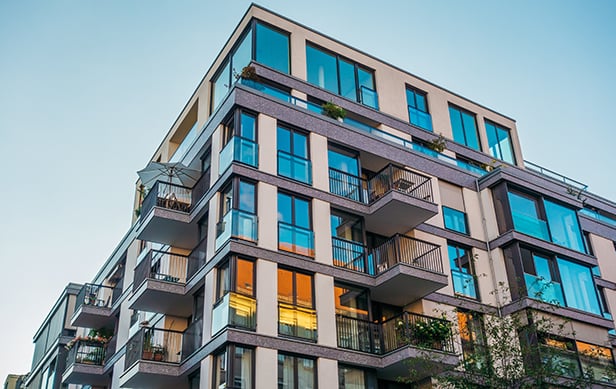

According to Grubb & Ellis, the vacancy rate soared by 120 basis points in the quarter to 10.7%. Not only was this by far the sector's largest single-quarter change in the 22-year history of the survey, it was also the largest vacancy increase this quarter among all four core property types. Reports from other brokerages show similar results. While CB Richard Ellis and Marcus & Millichap both found the rise a little less steep, the vacancy rates they reported were slightly higher – 12.4% according to the former and nearly 12% according to the latter.
The rise was not totally out of the blue, given that the previous Grubb & Ellis record was set in Q1 with a 70-basis-point increase. However, analysts say the steepness of the decline does not mean the industrial market is in worse shape than other sectors. Rather it reflects the fact the economic crisis was late in catching up with industrial users, as it took time for warehouses and distribution centers to empty of the backlog of orders.


Moreover, even as they emptied, many logistics tenants held on to the space, hoping business would recover. "Many space users have been finding large pieces of their warehouses go empty over the last two years," says Terry Reitz, senior vice president/global logistics in the Torrance, CA office of Grubb & Ellis. "This space has heretofore been unmeasured because until they bring it to market it doesn't hit the statistics."
But that space has at last come back to market, first as a trickle, now as a flood. "[N]ow that they see the business is not coming back as soon as they hoped, they are being forced to shed space to survive," Reitz explains.
Not surprisingly, the hardest hit markets are port cities. Of the 10 markets with the greatest jump in Q2 availabilities, according to CBRE, five (New Jersey North, New Jersey Central, Los Angeles, California's Inland Empire and Houston) serve major ports and three (Dallas/Ft. Worth, Chicago and Atlanta) are primary inland distribution centers for products carried by rail and truck from the ports. Grubb says tenants and owner-users in Northern and Central New Jersey returned nearly nine million square feet of space in the quarter, leading the nation in give-backs. Atlanta was number two with just under 6 million square feet returned.
The market recorded 49 million square feet of negative absorption in Q2, topping Q1's negative total of 40 million square feet according to Grubb. But a dramatic falloff in new completions may keep the figure from continuing to grow. Following the delivery of nearly 165 million square feet last year, Marcus & Millichap forecasts developers will complete only 65 million square feet of industrial space in 2009.
Nonetheless, the latter brokerage expects leasing momentum to remain muted, resulting in owners lowering rents to attract and retain tenants. It predicts asking rents will drop 5.8% while effective rents will contract 6.6%.
Despite the current gloom, Grubb senior vice president and chief economist Robert Bach believes the industrial market could be the first to turn around, thanks to a resurgence of Chinese manufacturing. "China's efforts to rescue its economy–a $586 billion stimulus package (larger as a share of GDP than the US stimulus) and a robust expansion of credit by the state-controlled banking system–appear to be putting the country on track to achieve its GDP growth target of 8% this year," he says. "This is a hopeful sign for US exports and, by extension, demand for light assembly and warehouse/distribution space."
Reitz agrees, noting the industrial market in general does not suffer from the same level of overbuilding that dog the office and retail markets. "When consumer spending picks up and goods roll back into the market. the buildings will start re-filling and rents will start to rise," he tells GlobeSt.com. "I can't say exactly when, but it should be much faster than the other property classes. We hope this will be 2010, but maybe we are wishful thinkers also."
© 2025 ALM Global, LLC, All Rights Reserved. Request academic re-use from www.copyright.com. All other uses, submit a request to [email protected]. For more information visit Asset & Logo Licensing.







